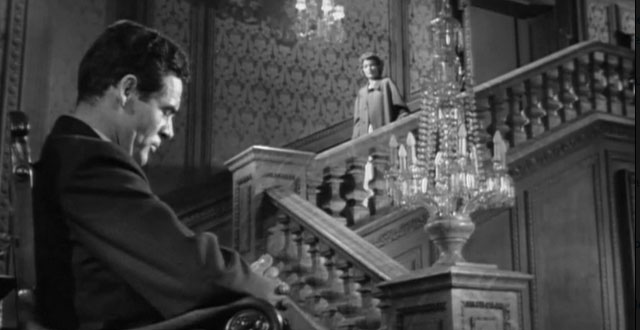
NOTES ON FILM & RESTORATION
11/08/2021Back in the 80s, Barry Lyndon was scheduled to show at New York’s Public Theater, which once had a great film repertory program run by the estimable Fabiano Canosa. In those days, it was difficult to find a print of that film, and Kubrick himself suggested that they show a Max Ophüls film in its place. “Highest of all I would rate Max Ophüls,” said Kubrick in 1963, “who for me possessed every possible quality.” Kubrick was a great admirer of Ophüls’ now celebrated use of the moving camera (he was far from alone), which he once said “could pass through walls.” James Mason actually composed a bit of comic verse on the subject: “A shot that does not call for tracks / Is agony for poor dear Max, / Who, separated from his dolly, / Is wrapped in deepest melancholy. / Once, when they took away his crane, / I thought he'd never smile again.” Mason made his American debut in Ophüls’ Caught, in which the moving camera is not as vivid a presence as it is in Letter from an Unknown Woman or the films that Ophüls would make after his return to Europe (the same is true of The Reckless Moment, Ophüls’ last American film, in which Mason played a more substantial role). Caught, the story of a young model (Barbara Bel Geddes) swept into marriage by a neurotic, paranoid tycoon (Robert Ryan) and finally rescued from her gilded existence by a romantic young doctor (Mason), was adapted by Arthur Laurents from the Libbie Block’s novel Wild Calendar, and he and Ophüls kept only the bare outline of the narrative. It wasn’t much of a secret that Ryan’s Smith Ohlrig was a very thinly veiled version of Howard Hughes, of whom Ophüls had extensive personal knowledge: Hughes had fired him from the misbegotten Vendetta after the first week of shooting. Ryan was under contract at RKO, recently purchased by Hughes, when Caught went into production, and Hughes gave him the go-ahead to play the role as he saw fit (he also worked out a side deal with editor Robert Parrish to secretly review the rushes.) The conception of the two principal characters and their fraught relationship is delicate and exquisitely drawn, and Ohlrig’s sprawling Long Island mansion becomes a haunting presence all on its own. Caught was long in need of a careful restoration—perhaps more than most films, its impact depends on the clarity of its visual detail—which was undertaken and completed by Paramount in collaboration with The Film Foundation. Max Ophüls had just as tough a time in Hollywood as Jean Renoir, but the four films he did manage to get made are each remarkable in their own way. Of the four, Caught is the most trenchant, as razor-sharp as Le Plaisir or Madame de…
- Kent Jones
Follow us on Instagram, and Twitter!
CAUGHT (1949, d. Max Ophüls)
CAUGHT was restored by Paramount Pictures with special thanks to Martin Scorsese and The Film Foundation.
